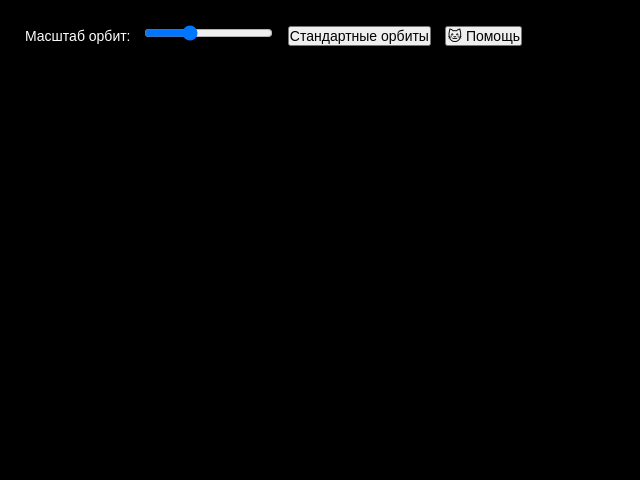Learn Orbital Mechanics
details
summary
A 3D interactive app to learn orbital mechanics with fun, intuitive controls.
prompt
Create a simple application for learning orbital mechanics with the ability to control orbits, making it understandable even for an 8-year-old child. Project Overview - Develop a 3D application that illustrates the mechanics of orbits to make complex concepts easy to understand. - Focus on the explanation of Lagrange points with engaging visuals and simple language, using a playful cat persona to guide the learning experience. UI/UX Design and Flow - Design an intuitive interface that allows users to interact with 3D models of Earth, Moon, Sun, Venus, Mars, and additional planets if desired. - Ensure all objects move along their respective orbits visually as fine lines, with clear and interactive elements. - Include animations to demonstrate Lagrange points distinctly, showing their positions and purposes with clear labels and descriptions. Core Functionality and Logic - Implement sliders or button controls to adjust the radius of planetary orbits dynamically and modify visual trajectories in real-time. - Incorporate controls for preset orbits to facilitate user interactions. - Ensure all objects move along calculated orbits based on gravitational forces, highlighting stable zones with visual cues. Best Practices - Use bright and engaging graphics suitable for young audiences to maintain interest and improve understanding. - Include detailed tooltips or audio explanations by 'the cat' persona for every key concept related to orbital mechanics and Lagrange points. - Provide easy-to-follow instructions or a brief tutorial to ensure users can explore the application's features without difficulty.
original prompt
Создай простое приложение для изучения орбитально механики с возможностьюь контроля орбит итд. все должно быть в 3д и наглядно чтобы даже 8 летний ребенок понял. LAGRANGE POINTS EXPLAINED BY A CAT Lagrange Points are spots where gravity and motion balance out. L1, L2, L3 sit on the line. L1: between Earth and Moon. L3: beyond Moon. L3: opposite Earth. L2 - L5 L3 L4 and L5 form equilateral triangles with Earth and Moon. Stable zones-gravity traps for space chill. # Обязательно все обьекты должны двигаться по своим орбитам. # Нужно визуализировать траектории тонкой линией # Нужны контролы, чтобы можно было изменять радиусы орбит всех планет и динамически менять визуализацию Q: What specific objects or planets should be included in the simulation? A: Earth, Moon, SUN, venera , mars and additional planets if desired. Q: What types of controls do you envision for changing the orbits? A: Sliders for radius adjustment or buttons for preset orbits.
generation cost summary
model name: o3-mini-high
response time: 90.78 sec.
result tokens: 13,096
cost: $0.05835720
